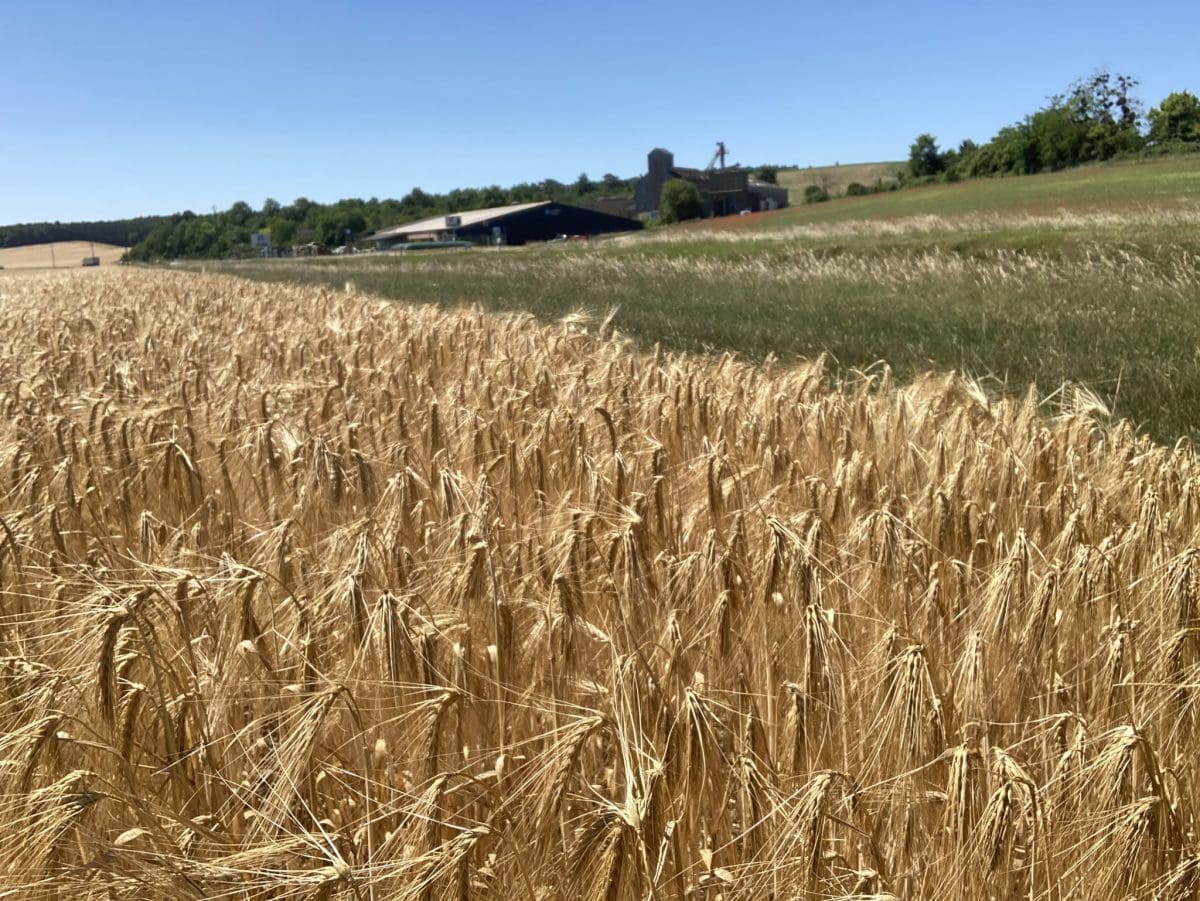
Barley just prior to harvest, growing in France. Photo: Emmanuel Bonnin
PARCHED soils and record heat conditions are quickly eroding this season’s grain production prospects in France, adding to grain supply woes across the globe. The state of the wheat crop in the European Union’s top producer deteriorated for a sixth consecutive week when crop ratings were released last Friday.
Cooler temperatures and scattered rains may have returned in some regions, bringing relief for crops and stabilising the production outlook in many regions, but the yield potential of this year’s harvest has already been severely dented for many crops, especially those planted into shallow, poorer quality soils.
And adding to the production anguish, heavy hail, strong winds and torrential rain caused havoc across France on June 3-5, with damage to grain crops reported in 65 of the country’s 101 departments. Isolated farms reported damage at 100 per cent. Some areas saw a month’s worth of rain in just 12 hours and hail stones up to 8 centimetres in diameter. Around 50,000 lightning strikes were recorded in one 24-hour period, with wind gusts to 106 kilometres per hour recorded.
France’s farm agency FranceAgriMer estimated 66pc of the French soft wheat crop was in good-to-excellent condition as at June 6, against 67pc the previous week and 81pc in the first week of June last year. The durum wheat rating was lower at 62pc good to excellent, down from 64pc a week earlier and 70pc last year.
Last week’s drop may have been small, but the country’s wheat condition ratings have fallen by 25pc since the beginning of May, when the crop was ticking along nicely at the best condition rating score for early May in the past seven years.
Agricultural consulting agency Stratégie Grains forecasts French wheat production to fall by more than 5pc this season, but further downgrades are possible. Trade estimates support this view, with most pegging the wheat crop in the 33-34 million tonne (Mt) range compared to 35.5Mt last year.
Spring barley in trouble
FranceAgriMer’s winter barley ratings are similar to those of wheat, with 64pc in the good-to-excellent category compared to 65pc the previous week and 76pc in 2021. However, the spring barley is in much worse condition, with 53pc of the crop falling into the top two categories, down 1pc week-on-week but considerably worse than the 86pc good to excellent in the same week in 2021.
It said winter barley harvest had commenced earlier than usual due to the heat and persistent dry conditions, but progress was minimal at this stage, and no quality trends were available, and expects a 0.4pc rise in production this season to 8.25Mt, with a 70,000-hectare increase in area offsetting an anticipated decrease in yield from 6.85t/ha to 6.5t/ha.
Rapeseed in better shape
FranceAgriMer forecasts the 2022-23 winter rapeseed crop at 3.87Mt, a year-on-year increase of 17.8pc. While the crop conditions remain relatively good overall, the drought conditions across much of the country have affected yield potential. The recent rains will have minimal impact on rapeseed production as the crop is now made in most regions.
Stratégie Grains forecasts total European Union wheat production to fall this harvest by almost 5pc, or 6.1Mt to 124.4Mt. In addition to the drought conditions in France, prolonged dryness and high temperatures this spring have decreased wheat production forecasts for Spain, Romania and Hungary, partially offset by an increase in German output due to favourable rainfall and adequate soil moisture reserves.
It reduced its European Union wheat export forecast for 2022-23 (Jly-Jun) by 500,000t to 30.3Mt, citing weakening global demand due to higher prices and rising competition from North American and Russian exporters. Traders nonetheless expect strong demand for EU wheat in the upcoming 2022-23 season, with the availability of Ukrainian supplies problematic.
USDA estimates look overdone
However, the Stratégie Grains production estimate is significantly lower than the USDA’s latest cut, with the June World Agricultural Supply and Demand Estimates report pegging output at 136.1Mt. This is down from 136.5Mt in May but sits 3pc above the USDA’s five-year average of 132.7Mt. With the higher production number comes a higher export forecast, with USDA landing on 36Mt for the 2022-23 marketing year.
Stratégie Grains decreased its EU barley production estimate by 1.4Mt to 50.3Mt, against 2021-22 production of 52Mt. The fall was attributed to lower spring barley output. The crop was sown into poor soil moisture, and subsequent hot and dry weather made the plant’s reproduction task very difficult.
Like wheat, the USDA’s barley production forecast for the EU is higher than Stratégie Grains at 51.7Mt. The USDA did revise this down in last week’s update from its May forecast of 52.5Mt, reflecting the less-than-ideal spring conditions.
Damage to this year’s wheat and barley crops in western Europe leading to lower output will only add pressure to already strained global balance sheets, thanks to Russia’s invasion of Ukraine. The talks to open up Ukraine’s ports are a pipe dream at this stage, but a bigger Russian crop looks set to compensate in the export space in 2022-23.

HAVE YOUR SAY